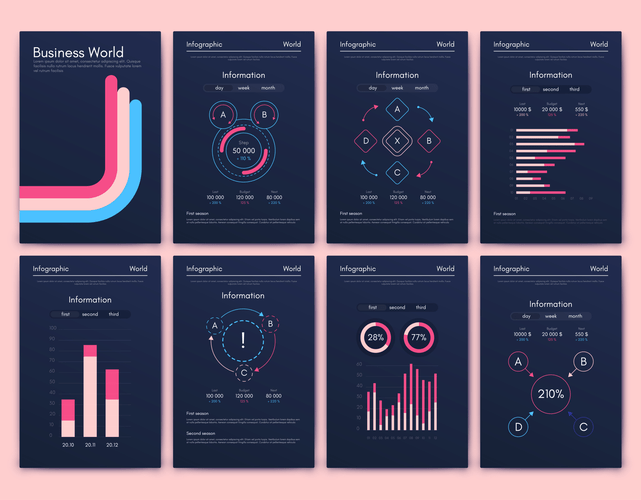If you’ve done the work of step one in the framework, you know the big issues the prospect is facing and can come to the table with insight and guidance ready to go. When you do that, your customers will be receptive to deeper questioning that lets you gather information needed to frame your value-first solution, like budget details, productivity needs, and operational hurdles. Start by reviewing calls and customer communications from similar deals to identify what value selling tactics have worked. Solicit the help of a fellow rep to practice delivery of your pitch — and ask them to lean into objections that would be realistic for your target prospect. This helps you get comfortable with your messaging and test out responses.
In the case of B2B sellers, include firmographic data like the size and type of company they represent, internal structure, and industry vertical. After determining your target customer, create buyer personas for each customer segment, including data points such as the customer’s age, gender, location, income level, and other demographic information. In some cases, companies may use a combination of value- and competition-based pricing strategies. In addition to the quality of the car, they’re paying for a brand and social status. Below are the advantages and disadvantages of value-based pricing model.
What Is a Sales Cycle and How Do You Optimize It for Consistent Sales?
Value-based pricing is a pricing strategy based on the buyer’s perceived value of a product or service. With value-based pricing, businesses determine what customers are willing to pay for their products based on how much they believe it is worth. Value-based care (VBC) is a model of healthcare reimbursement based on the quality of the treatment delivered rather than the number of services provided. In other words, the provider is paid for the patient’s positive outcomes. If the total cost of care is less than $15,000 for the year, then providers and payers may share in those savings (again, more on risk models in the next section). The hybrid model is most closely correlated with the pay-for-performance idea because the final rate fluctuates depending on the quality of care.
- These fees are usually based on the influencer’s reach and engagement, as well as the perceived value of their audience and exposure potential.
- Stocks may also be undervalued because they trade under the radar, meaning analysts and the media inadequately cover them.
- According to McKinsey, strategic improvement of a business’ pricing capabilities can positively impact profitability.
- Values-based investing can also allow you to use your investment dollars to take a moral stand on key issues such as gun violence, climate change, diversity and gender equity.
Under a capitated payment model, healthcare organizations receive a regular, upfront payment for a given period. The payment structure from the payer is negotiated on a per-patient basis and physicians are not limited in the number of patients they can accept. If the total costs are lower than the agreed-upon bundled payment, then there is an opportunity for the healthcare organization to achieve significant savings. (The amount of these savings they can retain depends on the risk model; more on that in the next section). The ability to collect and analyze patient data is a vital element of value-based care. Investing in a sophisticated electronic health record system is typically a requirement to help providers diligently track outcomes, monitor whether care processes were followed, and record patient satisfaction.
Difference Between Measurement-Based Care and Value-Based Care
The selling last week spread to all sectors even those with positive relative performance. So far in 2023 only XLK XLK and XLC XLC have positive YTD performance of 8.3% and 32.4%. I have included two columns that show how each of the sector ETFs has performed versus the S&P 500 over 6 Months and on a YTD basis. This is value based meaning another way of monitoring relative performance (RS) for ETFs or stocks. You can find past Hospital VBP Program value-based incentive payment adjustment factors as posted in Table 16B. We update the value-based incentive payment adjustment factors in Table 16B that applies to that year and which is available on CMS.gov.
As such, many software companies use tiered pricing to differentiate features and services based on the customer’s needs. This allows them to charge different prices for their products according to the value they provide, helping them meet the needs of different customer personas. Companies offering specialized products, features, and services are best positioned to use the value-based model — those selling commoditized products and services tend to use more straightforward cost-based pricing strategies. Shared savings models are another important part of the value-based care structure. The idea is that when providers achieve their efficiency goals, any excess savings are split between the healthcare organization and the payer. Shared savings may be incorporated into both upside-only and two-sided risk models.
What Is Value-Based Care?
Keep reading as we dissect value-based care to learn what it means for providers, patients, and the health care industry as a whole. It encourages preventive care and coordination between hospitals and health care professionals, while holding them accountable for the quality of service they provide. But the level of care in the United States hasn’t always kept pace with spending.

• Align clinician compensation incentives with value-based goals, including productivity, quality, citizenship/engagement, variable and at-risk components, affordability, operational efficiency, and provider satisfaction. There are some incidents that may show up on a company’s income statement that should be considered exceptions or extraordinary. These are generally beyond the company’s control and are called extraordinary item—gain or extraordinary item—loss.
Difference Between Value-Based Pricing and Other Pricing Models
In an effort to enhance quality, coordination and efficiency, the Centers for Medicare & Medicaid Services (CMS) tested a value-based purchasing approach to health care delivery. AHIP is the national association whose members provide health care coverage, services, and solutions to hundreds of millions of Americans every day. We are committed to market-based solutions and public-private partnerships that make health care better and coverage more affordable and accessible for everyone. Common sense and fundamental analysis underlie many of the principles of value investing. The margin of safety, which is the discount a stock trades at compared to its intrinsic value, is one leading principle.

You can’t expect to buy a stock for $50 on Tuesday and sell it for $100 on Thursday. Instead, you may have to wait years before your stock investments pay off, and you will occasionally lose money. The good news is that, for most investors, long-term capital gains are taxed at a lower rate than short-term investment gains.
Customizable Products or Services
Case in point—in 2019, Fitbit posted more than $1.4 billion in revenues; then, in 2021, Google finalized its purchase of Fitbit for $2.1 billion. A value investor purchasing Fitbit stock at an undervalued price of $5.35 on Feb. 9, 2017, would have done well because the stocks were converted to cash at a value of $7.35 per share at the merger and paid to investors. Value investors seek to profit from market overreactions that usually come from the release of a quarterly earnings report.

VBC is a promising approach to improving patient outcomes and reducing costs in pharmacy. Pharmacists can play a vital role in VBC by providing patients with high-quality care and services, collaborating with other healthcare providers, and advocating for policies that support VBC in pharmacy. Value-based care (VBC) is a healthcare delivery model that focuses on improving patient outcomes while reducing costs. VBC models align financial incentives with the quality and efficiency of care, rather than the volume of services provided. In the 1980s, the Centers for Medicare and Medicaid Services (CMS) were instrumental in shifting toward value-based care to improve the quality of care.
CMS’ Value-Based Programs
When the market reaches an unbelievable high, it usually results in the bubble bursting. Because the price levels are unsustainable, investors end up panicking and selling off related assets en masse. That’s what happened in the early 2000s with the dot-com bubble when the values of tech stocks shot up beyond what the companies were worth. We saw the same thing happen when the housing bubble burst in 2006, and the market crashed in the following years. Free cash flow is the cash remaining after expenses have been paid, including operating expenses and large purchases called capital expenditures, which is the purchase of assets like equipment or upgrading a manufacturing plant. If a company is generating free cash flow, it’ll have money left over to invest in the future of the business, pay off debt, pay dividends or rewards to shareholders, and issue share buybacks.
In focusing on individuals in this way VBP links science with the unique values of the particular people involved (as clinicians, patients, carers and others) in a given clinical decision. Participates in multidisciplinary quality and service improvement teams as appropriate. Participates in meetings, serves on committees, and represents the department and hospital/facility in community outreach efforts as appropriate. School of Medicine Established in 1930, Duke University School of Medicine is the youngest of the nation’s top medical schools. The Health System encompasses Duke University Hospital, Duke Regional Hospital, Duke Raleigh Hospital, Duke Primary Care, Duke Home and Hospice, Duke Health and Wellness, and multiple affiliations.
Sales
Value investing is the process of doing detective work to find these secret sales on stocks and buying them at a discount compared to how the market values them. In return for buying and holding these value stocks for the long term, investors can be rewarded handsomely. Just like savvy shoppers would argue that it makes no sense to pay full price for a TV since TVs go on sale several times a year, savvy value investors believe stocks work the same way. Of course, unlike TVs, stocks won’t go on sale at predictable times of the year such as Black Friday, and their sale prices won’t be advertised. Analyze the data you collect to determine your customers’ willingness to pay for different features or services, what perceived value they expect, and the overall demand for each item.